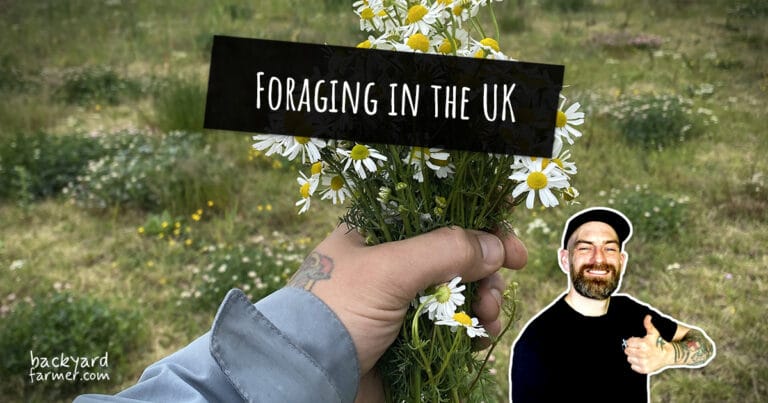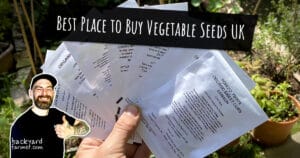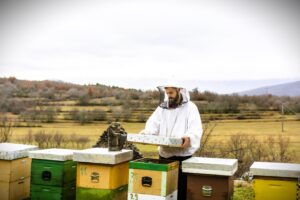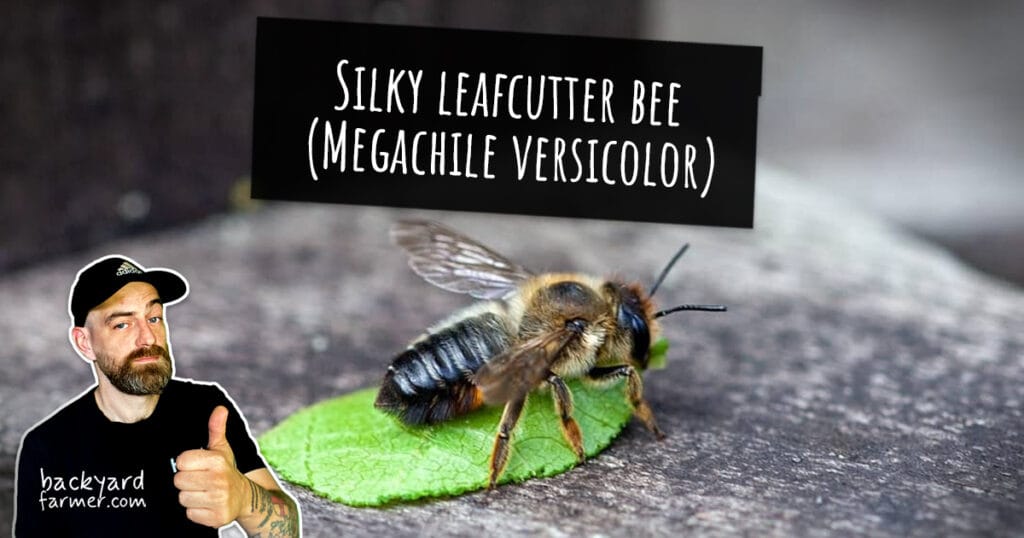Table of contents
- Introduction: Why Foraging in the UK Is Booming Again
- Understanding the Law on Foraging in the UK
- Finding Legal Foraging Spots Near You
- Beginner’s Foraging Guide: Easy Edible Plants in the UK
- Responsible and Sustainable Foraging in the UK
- Tools, Apps and Gear for Foraging in the UK
- Seasonal Foraging Calendar – What’s in Season in the UK
- Foraging and The Backyard Farmer
- Frequently Asked Questions About Foraging in the UK
- Conclusion: Take Your First Steps into Foraging in the UK
Introduction: Why Foraging in the UK Is Booming Again
Foraging in the UK has quietly evolved from a countryside pastime into a growing national movement. More and more people are rediscovering the joy of finding wild edible plants in England — berries, greens, herbs, and mushrooms that have sustained local communities for centuries. As awareness around sustainability and natural living grows, foraging for food in the UK has become one of the most rewarding ways to reconnect with nature and eat seasonally.
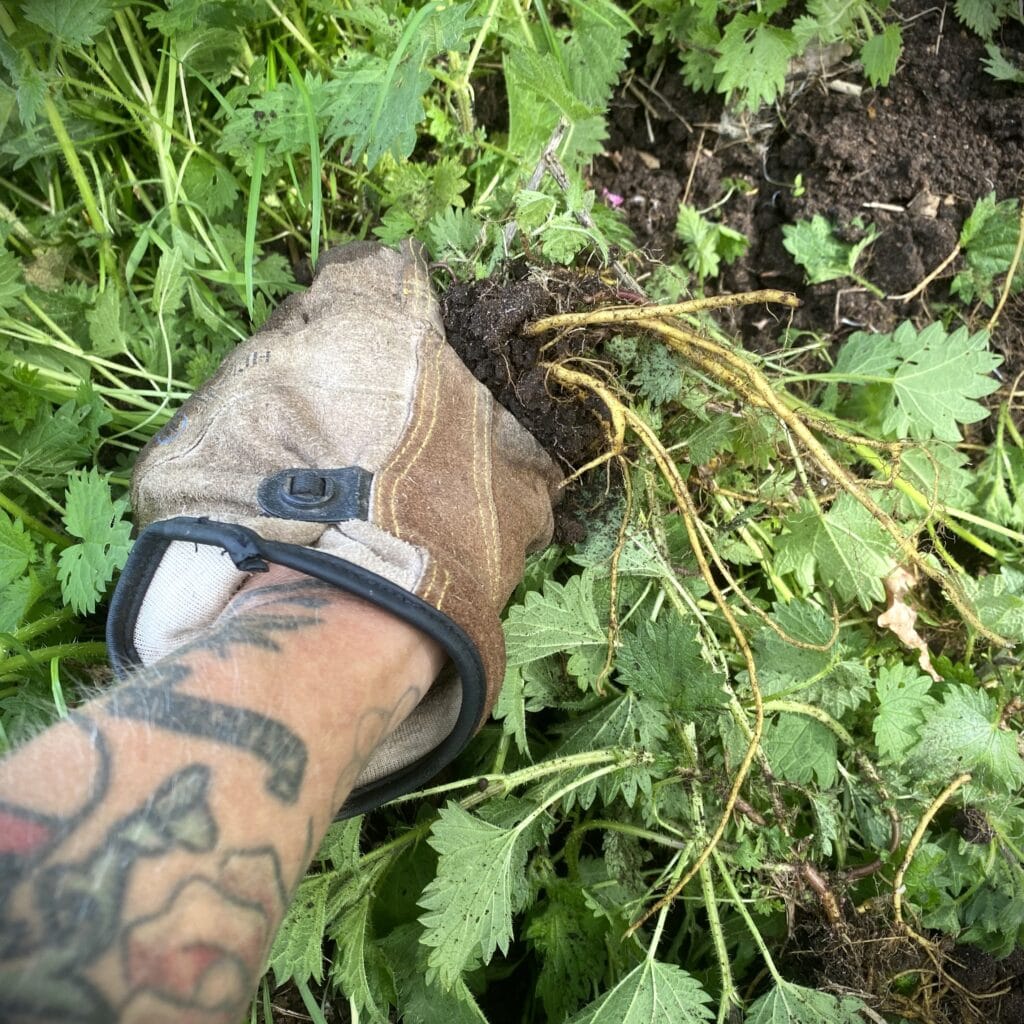
Why People Are Turning to Foraging
- A simple, hands-on way to reconnect with the outdoors and reduce your carbon footprint.
- Encourages sustainability, food independence, and self-sufficiency.
- Offers a calm, mindful break from fast-paced, modern living.
You don’t need acres of land or expensive equipment — just curiosity, patience, and a little knowledge about what’s safe to pick. From urban parks to rural hedgerows, wild food in Britain is closer than you might think. Once you start noticing it, every walk becomes an opportunity to spot something edible, seasonal, and fresh.
More Than Just Food
Foraging isn’t just about finding something to eat — it’s about rediscovering the natural rhythm of the countryside. By taking only what you need and leaving plenty for wildlife, you become part of a natural cycle that supports biodiversity. It’s also a step toward food resilience and self-reliance, aligning perfectly with a more sustainable lifestyle.
What You’ll Learn in This Foraging Guide
This beginner’s guide to foraging in the UK will help you:
- Understand the laws that protect wild spaces and edible plants.
- Learn where it’s legal (and where it’s not) to forage responsibly.
- Identify some of the best edible plants in Britain for beginners.
- Develop practical foraging skills that protect and preserve the environment.
Whether you’re adding wild greens to your salad, brewing your first foraged tea, or exploring the countryside with family, this guide will help you start your foraging journey with confidence and respect for nature.
Understanding the Law on Foraging in the UK
Before you head out with your basket and good intentions, it’s worth knowing the rules that protect both the countryside and your right to enjoy it. Foraging for food in the UK is legal in most places, as long as it’s done responsibly and within the law. Understanding where and how you can collect wild edible plants in England (and across Britain) helps you stay on the right side of both nature and the law.
The Four F’s: What You Can Collect
Across England, Scotland, Wales, and Northern Ireland, you’re legally allowed to gather what’s known as the Four F’s for personal use:
- Fruit
- Fungi
- Flowers
- Foliage
These are the wild foods you can collect from open-access land, public rights of way, and green spaces — provided you don’t take more than you need or harm the environment in the process.
This right is defined under Section 4(3) of the Theft Act 1968, which states:
“A person who picks mushrooms growing wild on any land, or who picks flowers, fruit or foliage from a plant growing wild on any land, does not (although not in possession of the land) steal what he picks unless he does it for reward or sale or another commercial purpose.”
In short, you can forage for wild food in the UK for personal use — but not for profit. Selling or using foraged food commercially requires landowner permission and, in some cases, a commercial foraging licence.
Where You Can and Can’t Forage in the UK
Foraging is generally permitted on open-access land, which includes:
- National Parks
- National Trails
- Areas of Outstanding Natural Beauty (AONBs)
- Nature Reserves
- Woodland Trust and National Trust paths
- Public rights of way and community green spaces
However, you cannot forage on:
- Private land without permission
- School or university grounds
- Active farmland or commercial orchards
- Construction or industrial sites
- Protected Sites of Special Scientific Interest (SSSIs)
If you’re unsure whether a location allows foraging, check Natural England’s Open Access Map. This free online tool helps you locate public land where you can safely collect wild edible plants in the UK without trespassing.
Responsible Foraging and the Countryside Code
Even when foraging is legal, how you forage matters. Avoid uprooting plants, stripping patches bare, or trampling delicate habitats. Take only what you need and leave plenty for wildlife and future growth.
Always follow the Countryside Code — it’s straightforward guidance that protects our shared green spaces. By foraging mindfully and respecting the land, you help ensure that foraging in Britain remains sustainable, positive, and open for everyone to enjoy.
Finding Legal Foraging Spots Near You
Once you understand the rules, the next step is discovering where to go foraging in the UK. The beauty of Britain is that you’re never far from wild food. From coastal paths and woodland trails to quiet parks and village lanes, foraging for wild plants and edible berries can be done almost anywhere — you just need to know where to look.
Open-Access Land and Public Spaces
Thanks to the Countryside and Rights of Way Act 2000, large areas of the UK countryside are classed as open-access land. This gives you the right to roam and, within reason, forage responsibly. Some of the best foraging spots in the UK include:
- National Parks – Expansive landscapes filled with meadows, moorlands, and ancient woodlands.
- National Trails – Long-distance paths that wind through hedgerows, fields, and wildflower corridors.
- Areas of Outstanding Natural Beauty (AONBs) – Perfect for spotting seasonal fruits, herbs, and fungi.
- Woodland Trust and National Trust sites – Many allow low-impact wild food foraging along their paths.
- Local Nature Reserves and Green Spaces – Great for beginners looking to forage close to home.
If you’re unsure whether an area allows foraging, check the Natural England Open Access Map. It’s a free tool that lets you search by region or postcode to find legal foraging locations near you.
Getting Landowner Permission
When it comes to private land, you’ll need the landowner’s permission before collecting anything. A polite conversation can go a long way — many smallholders, farmers, and estate owners are open to responsible foraging if you explain your intentions and show respect for their property.
Always remember: even if something looks wild, it may still be privately owned. When in doubt, ask first — it’s better to have permission than risk trespassing.
Respecting the Landscape
Even when you’re within your rights, how you forage matters. Stick to established paths, avoid trampling vegetation, and never uproot plants without consent. Take only what you need and leave plenty behind for wildlife and other foragers.
Foraging for food in the UK should always feel like sharing nature’s abundance, not claiming it. By leaving no trace and foraging mindfully, you help protect these landscapes so future generations can enjoy them too.
For more detailed maps, guides, and conservation advice, visit the Woodland Trust or National Trust websites — both offer reliable information on where to forage safely and sustainably across Britain.
Beginner’s Foraging Guide: Easy Edible Plants in the UK
If you’re new to foraging in the UK, start small and keep it simple. The goal is to build confidence by learning to identify safe, common plants that have no risky lookalikes. Below are some of the easiest and most rewarding wild edible plants in England — all easy to find in hedgerows, woodlands, and open meadows.
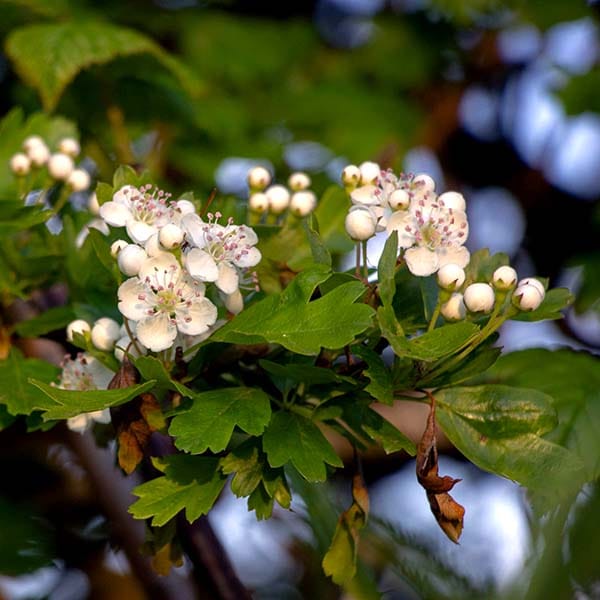
Hawthorn (Crataegus monogyna)
Hawthorn is one of Britain’s most familiar trees, often found along hedgerows and field edges. In spring, its young leaves — known as “bread and cheese” — have a mild, nutty flavour. By autumn, bright red hawthorn berries ripen and can be turned into syrups, jellies, or even wine. They’re also packed with antioxidants, making them a healthy addition to your foraged finds.
Learn more in our Hawthorn Berries Guide.
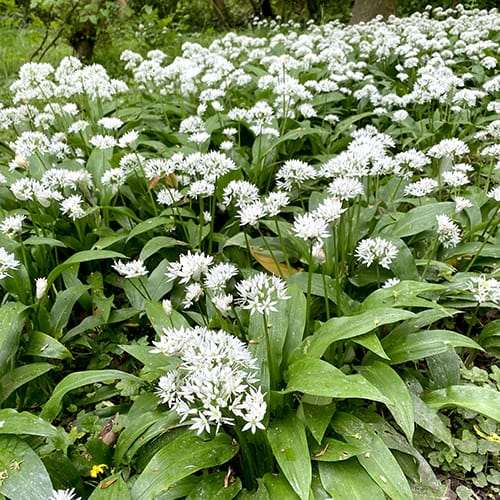
Wild Garlic (Allium ursinum)
Wild garlic, also known as ramsons, is a favourite among beginner foragers and chefs alike. You’ll usually smell it before you see it — its strong garlicky aroma fills woodlands in spring. The leaves are delicious in pestos, soups, and compound butters. Just make sure not to confuse it with lily of the valley, which looks similar but is poisonous.
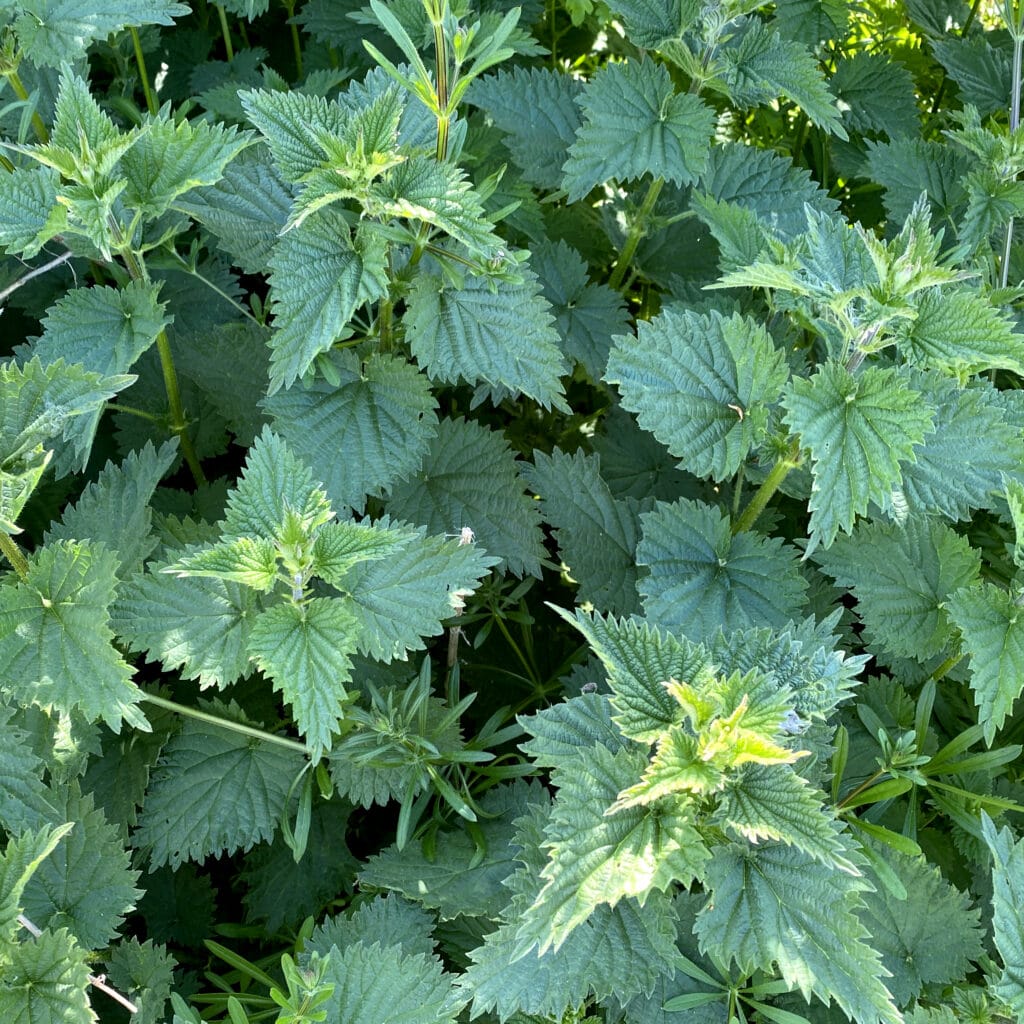
Stinging Nettles (Urtica dioica)
Nettles are one of the most nutritious wild greens in the UK, rich in iron, calcium, and vitamin C. Harvest the tender top leaves in spring using gloves, then cook them like spinach. Once blanched or dried, the sting disappears completely. Nettles are perfect for soups, teas, and homemade tonics — a true forager’s staple.
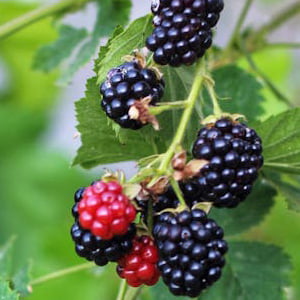
Blackberries (Rubus fruticosus)
Blackberries are a cornerstone of British foraging — and one of the easiest wild fruits to recognise. Found along hedgerows and brambles in late summer, they’re ideal for crumbles, jams, or freezing for winter. Remember to take only a modest share and leave plenty for wildlife, especially birds and insects that depend on them.
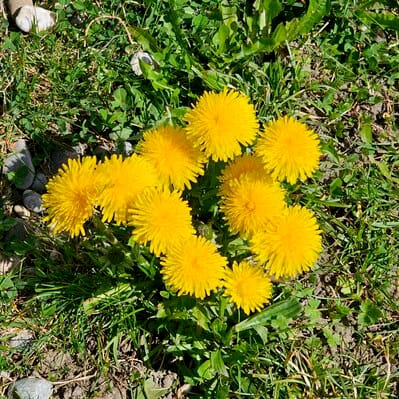
Dandelion (Taraxacum officinale)
The humble dandelion is one of the most versatile wild edible plants in Britain. The young leaves add a pleasant bitterness to salads, the flowers make tasty fritters or syrup, and the roots can be roasted for a caffeine-free coffee alternative. Always collect from clean, pesticide-free areas, away from roadsides or sprayed ground.
Safety and Identification Tips
- Always use at least two trusted sources when identifying a new plant.
- Avoid polluted or sprayed areas such as roadsides or industrial sites.
- Pick only from healthy, abundant populations — never rare or protected species.
- And most importantly, if you’re unsure, don’t eat it.
If you want to learn faster, invest in a reliable field guide or join a local foraging walk. With a bit of practice, you’ll soon start recognising wild edible plants in the UK wherever you go.
Responsible and Sustainable Foraging in the UK
Foraging in the UK is about much more than collecting wild food — it’s about respecting the land and protecting the ecosystems that make it possible. Every berry, leaf, and mushroom you gather plays a part in nature’s balance, feeding birds, insects, and wildlife. The goal is simple: enjoy foraging for wild food in Britain while leaving enough behind for everything else that depends on it.
Follow the Countryside Code When Foraging
The Countryside Code helps protect both people and the environment, and every forager should follow it. Keep these key principles in mind:
- Respect people and property. Close gates and leave fences and stiles as you found them.
- Protect the environment. Stick to public footpaths, avoid trampling plants, and never damage habitats.
- Leave no trace. Take all litter home — even if it isn’t yours.
- Keep dogs under control. Many foraging areas are home to livestock and ground-nesting birds.
By following these simple steps, you help ensure foraging in Britain stays sustainable and welcomed by local communities.
Take Only What You Need
A good rule of thumb is to harvest no more than one-third of what you find. This allows plants to recover and ensures wildlife still has enough food. When foraging for edible plants in England, choose from areas where plants are plentiful and avoid taking too much from one spot.
If you come across rare or protected species, admire them — but don’t pick them. Their role in the ecosystem is far more valuable than what they’d add to your basket.
Avoid Uprooting Wild Plants
Under UK law, it’s illegal to uproot any wild plant without the landowner’s permission. That includes digging up roots, bulbs, or rhizomes. Stick to collecting leaves, berries, or flowers unless you’ve been given permission, and take care to avoid disturbing the soil or surrounding vegetation. Practising ethical foraging for wild food in the UK ensures nature can continue to flourish.
Leave the Area Better Than You Found It
Before you head home, take a moment to tidy up. Close gates, smooth over disturbed soil, and pick up any litter. These small actions make a big difference — they protect habitats, preserve public access, and keep the reputation of foraging in the UK positive for everyone.
Sustainable foraging safeguards wildlife, encourages biodiversity, and helps preserve our right to enjoy wild food for generations to come.
For more practical tips on ethical foraging in the UK, see The Forager’s Calendar Review for guidance on what’s in season throughout the year.
Tools, Apps and Gear for Foraging in the UK
Foraging in the UK doesn’t have to be complicated. With a bit of curiosity, a basket, and a few essential tools, anyone can start collecting wild edible plants safely and responsibly. The right gear and resources make it easier to identify species, harvest sustainably, and build confidence every time you head outdoors.
Plant Identification Apps for UK Foraging
Modern technology can make your foraging adventures easier and more accurate. Several reliable apps allow you to photograph and identify plants instantly, helping you learn more about the wild food of Britain as you explore. Some of the best include:
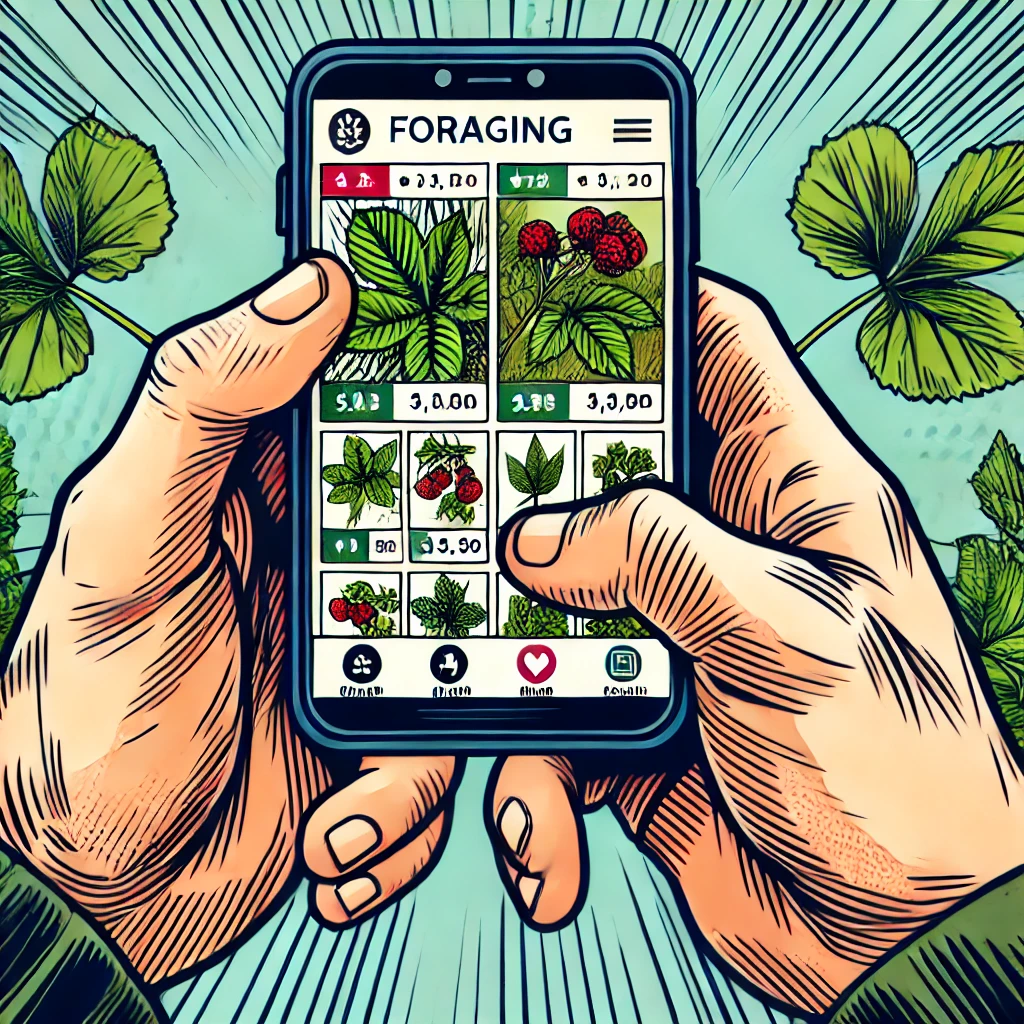
- PlantNet – A community-powered app with an extensive UK-based plant database.
- Seek by iNaturalist – Uses your phone’s camera to identify plants, fungi, and insects in real time.
- PictureThis – Simple and accurate, though the full version requires a subscription.
These tools are great for quick identification, but don’t rely on them alone. Always cross-check your finds with a trusted field guide or an experienced forager before eating anything.
Foraging Books and Field Guides
A good field guide is an essential companion for learning to identify edible wild plants in England and across the UK. Choose books that focus on local species, include clear photographs, and describe how plants change throughout the seasons. A reliable guide helps you spot the small details that apps can sometimes miss.
For tried-and-tested recommendations, see our Best Foraging Books UK article. It highlights the most practical and beginner-friendly options for anyone expanding their knowledge of British foraging.
Must-Have Foraging Equipment
You don’t need expensive gear to start foraging for food in the UK, but a few key items make your trips easier and more sustainable:
- A sturdy basket or reusable bag for gathering your finds.
- Scissors or a small knife for clean cuts that help plants regrow.
- Gardening gloves for handling thorny stems or nettles.
- A field notebook or notes app to record locations, seasons, and discoveries.
Reusable, long-lasting gear aligns perfectly with the sustainable mindset behind foraging in Britain. For more recommendations, check out our Best Foraging Bags UK guide.
Learn from Experience
The best lessons in UK foraging come from time spent outside. Pay attention to how habitats change through the seasons, take note of where plants thrive, and observe how wildlife interacts with them. If you can, join a local foraging walk or workshop — you’ll gain first-hand experience and meet like-minded people who share your passion for wild food foraging.
Every trip teaches you something new, and that’s what makes foraging in the UK such a rewarding and lifelong skill.
Seasonal Foraging Calendar – What’s in Season in the UK
Foraging in the UK moves with the rhythm of the seasons, and each one brings its own rewards. From the tender greens of spring to the rich berries of autumn, knowing what’s in season helps you plan your foraging trips and connect more deeply with the countryside. Whether you’re in the woods, along hedgerows, or by the coast, there’s always something edible waiting to be found.
Spring (March – May)
Spring marks the true start of the foraging season in Britain. Fresh shoots and herbs burst into life, filling the countryside with colour and scent. Keep an eye out for:
- Wild garlic (ramsons) – carpeting woodlands with its unmistakable aroma.
- Nettles – tender top leaves perfect for soups, teas, and sautés.
- Dandelion leaves – slightly bitter but packed with nutrients, ideal for salads.
- Hawthorn leaves – known as “bread and cheese,” a nostalgic favourite of British hedgerows.
These early greens are rich in vitamins and minerals — the perfect starting point for your UK foraging journey.
Summer (June – August)
By summer, the countryside is overflowing with fruit, flowers, and herbs. The long days make it a perfect time to explore and enjoy the best of wild food foraging in the UK. You’ll find:
- Elderflowers – perfect for cordials, syrups, and light desserts.
- Meadowsweet – a fragrant flower used for teas and herbal infusions.
- Blackberries and raspberries – ripening in abundance along sunny hedgerows.
- Mint and wild herbs – thriving near streams and shaded woodland paths.
Summer foraging in the UK is lively, social, and accessible — ideal for families, beginners, and those wanting to enjoy nature’s abundance.
Autumn (September – November)
Autumn is the high point of the foraging calendar in Britain. Hedgerows are heavy with berries and nuts, while woodlands come alive with fungi. This is the time to gather:
- Sloes, rosehips, and hawthorn berries – great for making syrups, jams, and infused gin.
- Hazelnuts and chestnuts – delicious roasted or stored for winter use.
- Mushrooms and puffballs – rewarding finds, but only for confident foragers with solid ID skills.
This season is all about abundance — but also restraint. Take what you’ll use, and always leave plenty behind for wildlife preparing for colder months.
Winter (December – February)
Winter foraging might be quieter, but it’s far from empty. With patience and observation, you can still uncover plenty of wild edible plants in Britain. Look for:
- Evergreen herbs – like rosemary and thyme in sheltered gardens or wild patches.
- Seaweeds – available year-round on Britain’s rocky coasts.
- Rosehips and crab apples – often hanging on into the frosty months.
Winter encourages you to slow down and look closer — the perfect opportunity to deepen your knowledge and refine your foraging skills.
To see a detailed month-by-month guide to foraging in the UK, visit the Woodland Trust Foraging Calendar and explore what’s in season near you.
Foraging and The Backyard Farmer
At The Backyard Farmer, foraging in the UK isn’t just a pastime — it’s part of a wider journey toward sustainable, self-sufficient living that keeps us connected to the land. The same principles that guide organic gardening and composting apply to foraging for wild food in Britain: care for the soil, respect natural limits, and share what you find.
A Step Toward Self-Sufficiency
Foraging for food in the UK reminds us that real nourishment doesn’t begin on supermarket shelves. It’s an act of reconnection — rediscovering the hedgerows, meadows, and coastlines of Britain as living larders. Whether you’re gathering a handful of blackberries on a summer walk or picking wild herbs for dinner, each foraging trip strengthens your bond with the natural world.
If you already grow your own produce, foraging in Britain fits naturally into that rhythm. Wild greens fill the hungry gap between harvests, while berries, herbs, and flowers can be turned into jams, teas, and tinctures — extending the harvest through every season.
Foraging as an Ethical and Sustainable Practice
Sustainable foraging in the UK follows the same values as regenerative gardening: balance, respect, and renewal. It’s about working with the land, not taking from it. Every time you harvest a leaf, berry, or mushroom, consider its role in the wider ecosystem and how birds, insects, and animals rely on it.
Practising mindful and responsible wild food foraging helps protect natural food sources and ensures they remain abundant for future generations — human and wild alike.
Continuing the Journey with The Backyard Farmer
The Backyard Farmer community celebrates every small step toward greater independence — from compost heaps to herbal teas. If you’re ready to go deeper into foraging in the UK, explore more of our guides and resources on sustainable living and wild foraging in Britain:
Each simple action — whether growing food or gathering it — builds a more resilient, grounded, and nature-connected way of life.
Frequently Asked Questions About Foraging in the UK
Curious about the rules, safety tips, and best times to go foraging in the UK?
You’re not alone — these are some of the most common questions people ask before heading out in search of wild edible plants. Below, you’ll find clear answers on what’s legal, where to forage, and how to stay safe while exploring Britain’s wild larder.
Yes — foraging in the UK is legal for personal use in most areas. Under the Theft Act 1968, you’re allowed to collect the “Four F’s” — fruit, foliage, fungi, and flowers — as long as you don’t uproot plants or forage for commercial sale. Always follow the Countryside Code and avoid protected sites or private land unless you have permission.
Yes. Even if plants appear wild, foraging on private land requires the landowner’s permission. Many farmers, smallholders, and estate owners will happily allow foraging if you ask politely and explain what you’re collecting. Respect their land, close gates, and avoid disturbing livestock or crops.
Not without permission. Selling foraged food in the UK counts as commercial foraging and requires consent from the landowner. Some foragers partner with local restaurants or markets, but doing so without permission could result in fines. For personal use, though, you’re completely within your rights.
You can forage in the UK all year round, but spring and autumn are the most rewarding seasons. Spring brings wild garlic, nettles, and fresh greens, while autumn is prime time for berries, nuts, and mushrooms. Each season has something unique — check out our Seasonal Foraging Calendar above for month-by-month inspiration.
No. It’s illegal to uproot wild plants in the UK without the landowner’s permission. You can pick leaves, berries, flowers, and mushrooms, but you must leave the roots intact to allow regrowth. Uprooting harms local ecosystems and can result in fines under the Wildlife and Countryside Act 1981.
Use at least two reliable sources to identify any wild edible plant before eating it — ideally a field guide and a trusted app. Avoid foraging near roads, industrial sites, or sprayed farmland to prevent contamination. And remember: if you’re not 100% sure of a plant’s identity, don’t eat it.
Generally, it’s best to avoid heavily trafficked roads or areas that may be polluted. Plants growing near roads can absorb exhaust residue and heavy metals. For safe foraging in Britain, choose woodlands, nature reserves, or clean hedgerows away from traffic and urban runoff.
Conclusion: Take Your First Steps into Foraging in the UK
Foraging in the UK is more than a countryside pastime — it’s a rewarding way to reconnect with nature and rediscover the wild foods that grow freely around us. Every hedgerow, woodland, and coastline hides edible treasures waiting to be found. As you explore, you’ll uncover not just fresh, seasonal ingredients but also a deeper connection to the rhythm of the natural world.
Start Small and Build Confidence
If you’re new to foraging for food in the UK, begin with just one or two easy-to-recognise plants. Practise identifying them in different environments, and take time to learn how they change through the seasons. Over time, your confidence will grow — you’ll start to notice when wild garlic carpets the woods, when berries ripen along the hedgerows, and when nuts begin to fall in autumn.
Practice Ethical Foraging
Always remember that ethical foraging in Britain is about balance and respect. Take only what you need, leave plenty behind for wildlife, and avoid damaging plants or habitats. The goal isn’t to gather the most — it’s to harvest thoughtfully and sustainably, giving back to the land that provides.
Learn, Explore, and Grow
When you’re ready to deepen your knowledge of foraging in the UK, explore these guides and resources to help you grow your confidence and skills:
- Foraging for Beginners UK
- A Forager’s Guide to Hawthorn Berries
- The Forager’s Calendar Review
- Best Foraging Books UK
Final Thoughts
Whether you’re gathering wild garlic in spring or blackberries in autumn, every walk outdoors offers a chance to connect more deeply with nature. So grab a basket, step outside, and begin your own foraging journey in Britain — guided by curiosity, care, and gratitude for everything the land provides.
